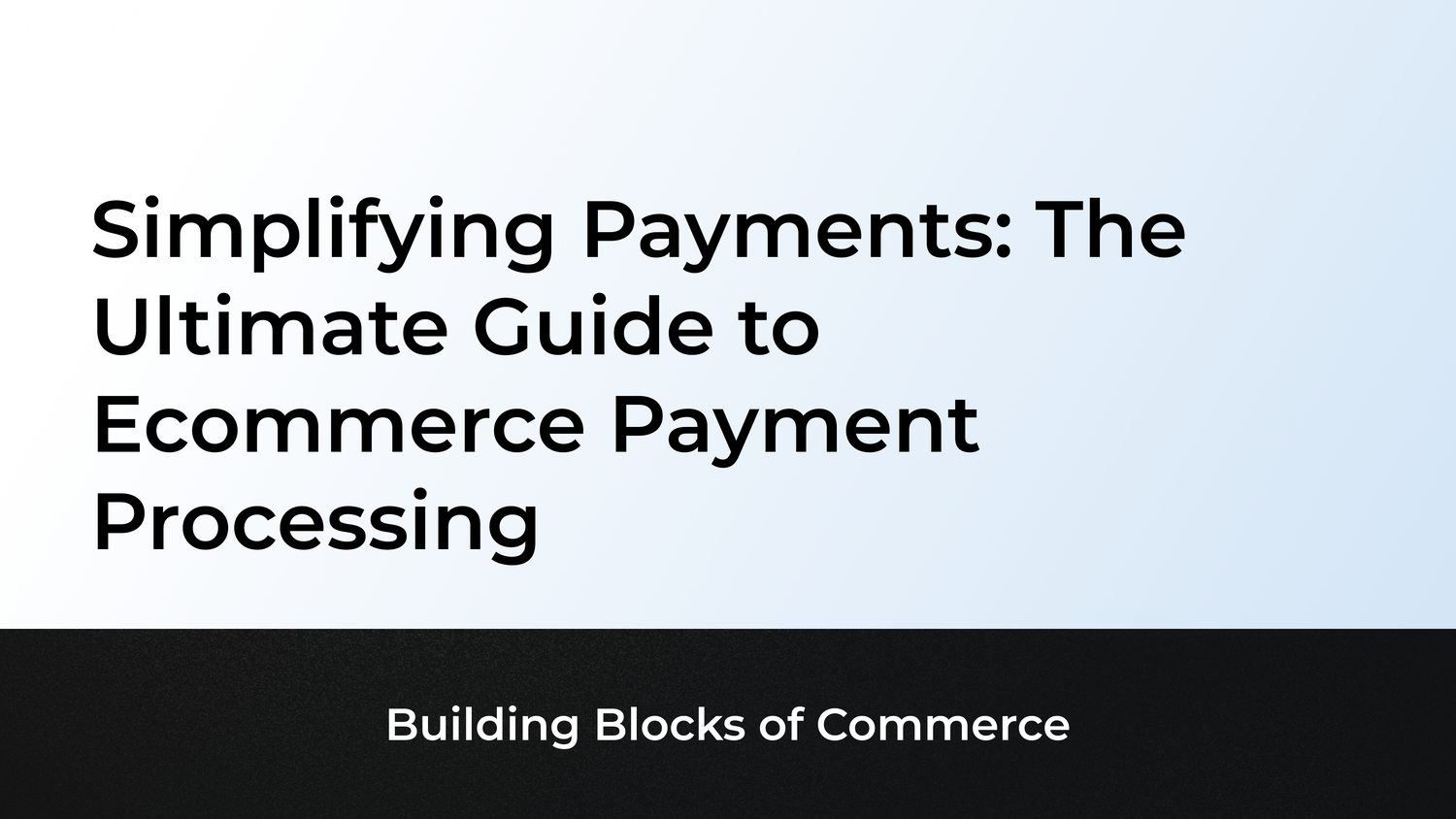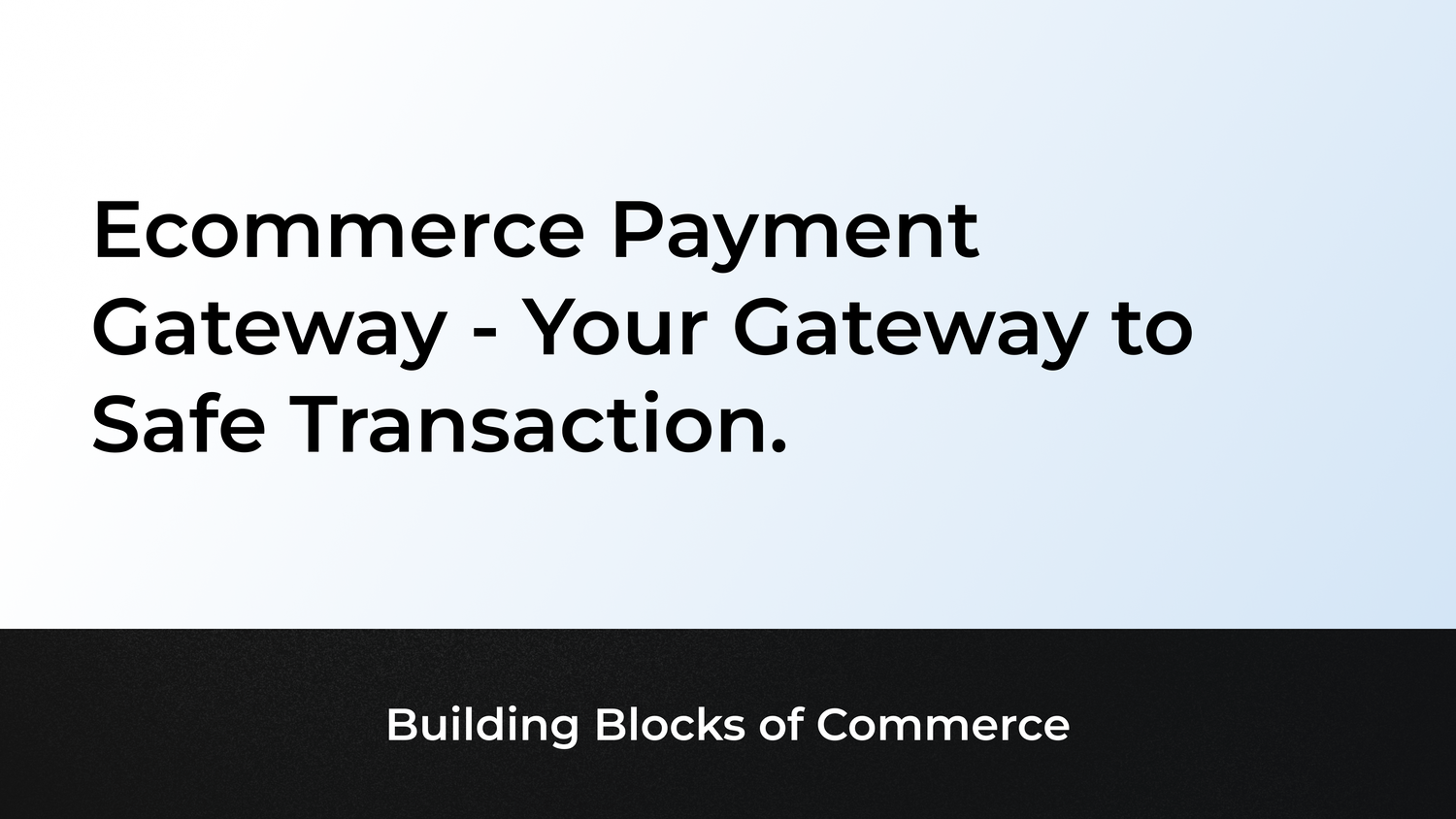Introduction
The ecommerce industry is evolving and growing rapidly.
According to Statista’s research, the global ecommerce market is estimated to grow at a CAGR of 9.8% by 2028. The convenience, discounts and free shipping, easy checkout process, and personalized experiences have encouraged customers worldwide to shop online.
Today, setting up an online shop has also become easy. Over 26 million ecommerce sites are already in the market. Additionally, traditional brick-and-mortar brands like Target and Walmart are strengthening their online presence to keep pace with ecommerce brands.
With so much competition in the industry, optimizing the site's speed is essential. Faster page loads can make or break your website’s user experience.
We’ll explain it in detail in this blog.
You’ll learn:
- What is ecommerce site speed optimization?
- Importance of ecommerce site speed optimization
- Factors impacting ecommerce site speed optimization
- How to optimize ecommerce site speed?
What is ecommerce site speed optimization?
Ecommerce site speed optimization is the process of improving the site’s page load speed. Simply put, the ecommerce pages must load quickly to prevent customers from leaving the page. According to a Digital.com survey, 53% of customers expected the ecommerce sites to load within three seconds. Half of them were willing to abandon the cart if the page did not load faster.
A delay of seconds can frustrate customers and cost you sales. Let’s find out what causes this delay and how you can fix it. But before that, let’s understand why site speed matters.
Importance of ecommerce site speed optimization
Here are a few reasons why you must optimize your ecommerce site’s speed.
Better user experience
- Today’s customers are spoilt for choices. They will not wait till your page loads. They will shop from a competitor's website if it displays the product faster.
- A faster site speed will reduce your customers' wait time and enable them to complete the shopping process quickly—from searching for a product to adding it to the cart and checking out. The faster the site speed, the better the customer experience.
Low bounce rates
- The bounce rate indicates overall user engagement. It measures the percentage of visitors who left the website after visiting a single webpage. The lower the bounce rate, the higher the engagement.
- A slow-loading website could be one reason for the high bounce rate. It could frustrate the customer and lead to site abandonment.
- Faster site speed encourages customers to explore the website further and shop. They stay on the website longer, and that reduces bounce rates.
Improved conversions
A study conducted by Deloitte and Google revealed that a faster site load improves conversions significantly. It showed that decreasing the page load time by one-tenth of a second increased the conversion rates by 8.4% and the average order value (AOV) by 9.2%. Faster page load time ensures the customer stays invested throughout the shopping journey and provides the instant gratification that the customer seeks from shopping online.
Higher search ranking
- Websites that rank higher on search engines experience more traffic, click-through rates, and conversions. Hence, most ecommerce sites aim to feature on the first page of the search engine.
- Cracking the search engine ranking is not as complex as it might seem.
- Search engines like Google rank sites based on user experience. The better the user experience, the higher the search ranking and traffic to the website. Among the various factors that Google measures for ranking, speed takes one of the top spots. If the page loads faster, Google ranks the website higher, leading to increased discovery among customers.
Increased customer loyalty
- Faster page loads significantly impact customer loyalty. They lower the wait time and allow the customer to explore the website smoothly without interruption.
- Customers who enjoy a smooth shopping experience will likely shop more from the same brand again and recommend it to others. It helps you acquire new customers organically and boost revenue through repeat purchases.
Factors impacting ecommerce site speed optimization
By now, you know that a fast-loading ecommerce site is essential for retaining customers, gaining a competitive edge, and boosting conversions and revenue. However, to improve the site speed, you must know the issues affecting it. Here are a few factors commonly affecting an ecommerce site’s speed.
Large media files
Websites that use large multi-media files and high-resolution images take a lot of time to load. While the aim is to make the website attractive and engaging, it could frustrate the customer, leading to high bounce and abandonment rates.
HTTP requests
An HTTP request is a message sent from the client to the server to receive a specific file or data. You must strive to keep the HTTP requests between 25 and 50. HTTP requests beyond that could slow the website and lead to poor customer experience.
Third-party app integrations
Sometimes, you might add a plugin or integrate your website with third-party apps to improve customer experience. However, they could impact page speed if they are not optimized,
Web hosting
Web hosting plays a significant role in site speed. An unreliable and slow hosting service could lead to frequent site crashes and unexpected downtime. It could worsen during peak traffic, such as the holiday season, leading to high customer churn and lost opportunities to earn profits.
Site architecture
As your business scales, your ecommerce website will become more sophisticated. However, too many large files, low crawling depth, and a confusing site structure could slow down the site and lead to a substandard customer experience.
How to optimize ecommerce site speed?
Here are a few steps you can implement to improve ecommerce site optimization:
Set performance goals
Before you start optimizing the ecommerce site speed, determine the performance goals. These goals should be realistic and achievable. Study the industry benchmarks and set the goals accordingly. Remember to monitor the set goals regularly to ensure you are on track.
Measure the existing speed
- Typically, companies use two metrics to measure a website’s speed—the page speed (the time taken for content on a URL to load) and the site speed (the average measure of page load times).
- Measuring the existing speed will help you understand how long it takes for the site or page to load and let you take a step back and fix the problem. Various tools are available to measure speed, but we recommend working with a technology partner to audit your site and optimize its speed.
- We’ve set the performance benchmark and measured the existing site speed. Let’s implement a few measures to optimize the speed.
Use a content delivery network for a faster experience
A Content Delivery Network (CDN) is a network of servers spread worldwide that distributes content and optimizes its delivery. It caches and stores the content on servers worldwide. So, whenever a user requests content, it is directed to the server nearest the user’s location. This enables the site to deliver content to the user quickly. It reduces server load and significantly improves local user experiences. Consider using CDN to provide customers with a faster and more local experience.
Reduce or re-size file sizes
Although ecommerce sites are visually rich, slow loading speed could lead to customer churn. To avoid this problem, reduce or re-size the sizes of images and videos. Here are a few steps you can take to optimize the file sizes:
- Compress the image size without compromising on its quality. Find tools that can help you do that.
- Ensure there are no empty image sources, as that could burden the browser.
- Use YouTube lite embeds to reduce the web page’s size and improve page load speed. YouTube lite embed will load the video only when a user clicks the thumbnail.
Reduce website redirects
Too many website redirects burden the website, reduce its speed, and impact its SEO ranking. In website redirects, the user is directed to a URL different from the one requested. It could happen when links are broken, pages are deleted, merged, or under maintenance, or when the domain changes. You can address this problem by checking and removing the broken links, fixing the redirect loops, updating the links, and building a custom 404 error page that shows up when the user enters a wrong URL. Fewer website redirects will reduce the burden on the site and enhance its speed.
Choose the right hosting provider
The right hosting provider ensures your content is stored and delivered to customers quickly.
Here are a few factors to look into while choosing the hosting provider:
- Ensure the provider is reliable and supports your business when it scales. There should be less downtime while scaling the business.
- You can choose between shared, dedicated, and cloud-based hosting based on your needs and affordability. For example, shared hosting is affordable but slow. Dedicated hosting is more reliable and secure but expensive. Cloud-based hosting is flexible and affordable. It can easily manage traffic spikes.
- Check the hosting platform’s memory, bandwidth limits, and peak user load. This will prevent website crashes and support scalability during peak traffic.
Use caching
Caching is a website component that stores website content on a customer’s device or browser for quick access instead of retrieving it from the server. This reduces the server and bandwidth burden and improves the ecommerce site speed.
Reduce HTTP requests
Every HTTP request made by the browser slows down the site’s speed. To improve ecommerce site optimization, reduce the number of HTTP requests. Typically, the HTTP requests increase when links for page elements like images and CSS files are broken. Check and delete those broken page elements to decrease the HTTP requests and improve the website’s speed.
Introducing Marmeto
While the above steps will help you optimize the site speed, working with a trustworthy expert will help you achieve the goal faster.
At Marmeto, we help ecommerce companies shorten customer journeys, optimize their online presence, and get lightning-fast conversions. Take Neeman’s, for example. This ‘Made in India’ footwear brand noticed the slow site speed ruined customers’ experiences.
Neeman’s contacted Marmento personally to do a PoC for their site due to our shared commitment to excellence. We eliminated the clutter from their website’s backend, assessed the factors affecting its UX and UI, improved its usability, and deployed a custom two-step checkout to increase conversions. All these improvements increased the site speed and made shopping convenient and less time-consuming.
Like Neeman’s, we have worked with 1000+ clients across 31+ countries to build successful and innovative ecommerce businesses.
You can read our customer success stories to know more about our services.
From designing and developing ecommerce stores to migrating platforms, optimizing performance, and customizing sites, we understand the client’s needs and extend support at every stage. This allows the companies to focus on growing their business without worrying about anything else.
Get in touch with us to optimize your site’s speed.
Wrap-up
In an era of instant gratification, don’t undermine the importance of ecommerce site speed optimization.
An optimized site with a good page load time will reduce bounce rates, improve conversions, retain customers, and help you generate more revenue through repeat purchases.
Assess your website regularly for large multimedia files, HTTP requests, confusing site architecture, poor web hosting, and integration with unoptimized third-party apps. This will help you recognize and solve the bottlenecks to improve the site’s speed.
Reducing the file sizes, choosing the right hosting provider, using CDNs, and reducing HTTP re-directs are a few ways to optimize the site’s speed. However, we recommend working with a trusted technology partner like Marmeto to do the heavy lifting for you.
To know more about how we can support you, contact us.




